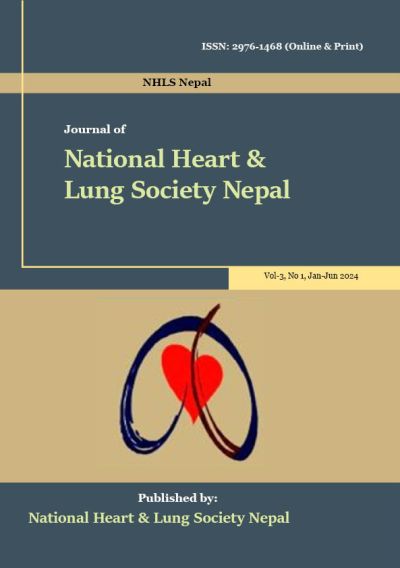Femoral artery Pseudo-aneurysm: Presentation, Causation and Outcome in Cardiothoracic Vascular and Transplant Centre of a Tertiary Level Hospital in Nepal
DOI:
https://doi.org/10.3126/jnhls.v3i1.64604Keywords:
vascular disease, femoral artery pseudo-aneurysm, IV drug abuse, NepalAbstract
Background: Peripheral arterial pseudo-aneurysms are of varied etiology and are quite common presenting from simple swelling to life threatening hemorrhage and sepsis. Our study aimed at evaluating our Institute’s experience with femoral artery pseudo-aneurysm over a span of 2 years with particular focus on the various range of presentations, causative factors and management outcomes.
Methods: Retrospective analysis of medical records of patients with diagnosis of femoral arterial pseudo-aneurysm who underwent surgery was done. Data was collected retrospectively from Anesthesia and vascular surgery records as well as administrative records.
Results: Over the duration of 2 years we found a total of 135 cases of femoral artery pseudo-aneurysm treated in our center. Intravenous drug abuse (112) followed by catheter induced (11) was the commonest etiology. Demographics showed a propensity towards the youth with most cases in the 20-30 age group (78, 58%) followed by 30-40 (35, 25%). A painful swelling with tenderness (91) was the commonest presentation. All patients underwent surgical treatment with 62 (45 %) patients undergoing ligation and the same numbers undergoing pseudo-aneurysm repair, 62 (45%). 78 (58%) patients had an uneventful recovery. However 18 cases had to undergo limb amputation and 7 patients lost their lives due to various complications.
Conclusion: Our study found that femoral artery pseudo-aneurysms present with various etiology and presentation, poses a huge challenge to the clinicians for surgery and management of its complications.




